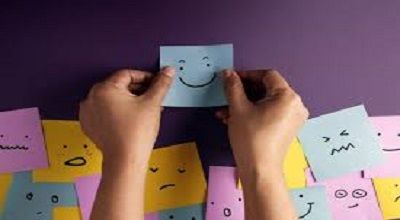Social-emotional Learning (SEL)
Social-emotional learning (SEL) refers to the process of acquiring and applying the knowledge, skills, and attitudes necessary to understand and manage emotions, set and achieve positive goals, feel and show empathy for others, establish and maintain positive relationships, and make responsible decisions. SEL is a crucial aspect of education that goes beyond traditional academic subjects, aiming to foster the holistic development of students.
Key Components of Social-Emotional Learning:
- Self-Awareness: Recognizing and understanding one’s own emotions, strengths, weaknesses, values, and goals.
- Self-Management: Developing the ability to regulate emotions, control impulses, and set and achieve goals.
- Social awareness: is being able to understand and empathize with others’ perspectives, experiences, and emotions.
- Relationship Skills: building and maintaining positive relationships, communicating effectively, and working collaboratively with others.
- Responsible Decision-Making: Making ethical and constructive choices, considering the well-being of oneself and others.
Implementing SEL in Education:
- Curriculum Integration: Integrate SEL into the school curriculum across various subjects and grade levels.
- Explicit Instruction: Provide explicit instruction on social and emotional skills, often through dedicated SEL programs or activities.
- Positive School Climate: Foster a positive and inclusive school culture that promotes a sense of belonging and emotional safety.
- Teacher Training: Equip educators with the knowledge and skills to model and teach SEL competencies.
- Parent and Community Involvement: Engage parents and the community in supporting SEL initiatives and reinforcing these skills outside of the school environment.
Benefits of SEL:
- Academic Success: SEL is associated with improved academic performance and a positive impact on students’ overall well-being.
- Reduced Behavior Issues: SEL contributes to a decrease in behavior problems, disciplinary incidents, and bullying.
- Enhanced Mental Health: SEL helps students develop resilience and coping skills, reducing the risk of mental health issues.
- Improved Social Skills: Students with strong SEL skills are better equipped to navigate social interactions and form positive relationships.
- Preparation for Life: SEL provides students with essential life skills that contribute to success in personal, academic, and professional domains.
As awareness of the importance of social-emotional learning continues to grow, many educators and policymakers are actively incorporating SEL into school curricula to support the overall development and well-being of students. Social-emotional Learning (SEL)
Social-emotional learning (SEL) refers to the process of acquiring and applying the knowledge, skills, and attitudes necessary to understand and manage emotions, set and achieve positive goals, feel and show empathy for others, establish and maintain positive relationships, and make responsible decisions. SEL is a crucial aspect of education that goes beyond traditional academic subjects, aiming to foster the holistic development of students.
Key Components of Social-Emotional Learning:
- Self-Awareness: Recognizing and understanding one’s own emotions, strengths, weaknesses, values, and goals.
- Self-Management: Developing the ability to regulate emotions, control impulses, and set and achieve goals.
- Social awareness: is being able to understand and empathize with others’ perspectives, experiences, and emotions.
- Relationship Skills: building and maintaining positive relationships, communicating effectively, and working collaboratively with others.
- Responsible Decision-Making: Making ethical and constructive choices, considering the well-being of oneself and others.
Implementing SEL in Education:
- Curriculum Integration: Integrate SEL into the school curriculum across various subjects and grade levels.
- Explicit Instruction: Provide explicit instruction on social and emotional skills, often through dedicated SEL programs or activities.
- Positive School Climate: Foster a positive and inclusive school culture that promotes a sense of belonging and emotional safety.
- Teacher Training: Equip educators with the knowledge and skills to model and teach SEL competencies.
- Parent and Community Involvement: Engage parents and the community in supporting SEL initiatives and reinforcing these skills outside of the school environment.
Benefits of SEL:
- Academic Success: SEL is associated with improved academic performance and a positive impact on students’ overall well-being.
- Reduced Behavior Issues: SEL contributes to a decrease in behavior problems, disciplinary incidents, and bullying.
- Enhanced Mental Health: SEL helps students develop resilience and coping skills, reducing the risk of mental health issues.
- Improved Social Skills: Students with strong SEL skills are better equipped to navigate social interactions and form positive relationships.
- Preparation for Life: SEL provides students with essential life skills that contribute to success in personal, academic, and professional domains.
Final Words
As awareness of the importance of social-emotional learning continues to grow, many educators and policymakers are actively incorporating SEL into school curricula to support the overall development and well-being of students.
